Morinda officinalis – ba ji tian,Morindae Officinalis Radix,morinda root,morinda officinalis how,morinda officinalis root,morindae radix,radix morinda officinalis,ba ji tian herb,ba ji tian tcm,Morinda officinalis
[Family and medicinal part] This product is the root of Morinda officinalis, a plant of the Rubiaceae family.
[Nature and flavor and meridians] Spicy, sweet, slightly warm. Enters the kidney meridian.
[Effects] Tonifies the kidney and helps yang, dispels wind and dispels cold and dampness.
[Clinical application] 1. Used for kidney deficiency and impotence, spermatorrhea, premature ejaculation, and weakness of the waist and knees.
Morinda officinalis is warm but not dry, tonifies but not stagnates, and can tonify kidney yang and strengthen tendons and bones. For impotence and premature ejaculation, it is often used with Cistanche deserticola and Cuscuta australis; for the treatment of weakness of the waist and knees, it is often used in combination with Dipsacus asper and Eucommia ulmoides.
2. Used for symptoms such as cold and dampness in the lower limbs.
This product can help kidney yang, dispel cold and dampness, and treat pain. It is used to treat the above symptoms and is often used in combination with Aconite and Cibotium barometz.
[Prescription name] Morinda officinalis, Morinda officinalis flesh (wash, dry, slice for use.)
[General dosage and usage] 3 to 5 qian, decoct and take.
[Comment] Morinda officinalis warms the kidney and strengthens the bones and muscles. Although it tastes spicy and warm, it can dispel wind and dampness, but its nature is soft and moist but not dry. Therefore, it is not used for general rheumatic pain in clinical practice. It is only considered for patients with kidney yang deficiency and lower limb cold and dampness pain. If it is damp-heat, red, swollen, hot and painful feet and knees, it is contraindicated.
[Example of prescription] Morinda officinalis pill “Medical Invention”: Morinda officinalis, Schisandra chinensis, ginseng, Rehmannia glutinosa, Rhizoma Cinnamomi, Drynaria fortunei, dragon bone. Treat liver and kidney deficiency, low back pain, and spermatorrhea.
【Literature Excerpt】《本经》: “It can cure strong wind evil qi, impotence, strengthen muscles and bones, calm the five internal organs, nourish the middle, increase will and benefit qi.”
《本草刚目》: “It can cure beriberi, remove wind disease, and nourish the blood sea.”
《本草备要》: “It can nourish the kidney and benefit essence, cure five kinds of labor and seven kinds of injuries, dispel rheumatism with pungent and warm taste, and cure beriberi and edema due to wind.”
It can be dug all year round, washed, removed from the fibrous roots, dried to 60% to 70%, gently flattened, and dried. This product is the dried root of Morinda officinalis How, a plant of the Rubiaceae family.
【সম্পত্তি】
This product is oblate cylindrical, slightly curved, of varying lengths, with a diameter of 0.5~2cm. The surface is grayish yellow or dark gray, with longitudinal and transverse cracks, and some of the cortex is transversely separated to expose the wood; the texture is tough, the cortex is thick in the cross section, purple or lavender, and it is easy to peel off from the wood; the wood is hard, yellow-brown or yellow-white, with a diameter of 1~5mm. The smell is slight, and the taste is sweet and slightly astringent.
【পরিচয়】
(1) Cross section of this product: The cork layer is composed of several rows of cells, and the stone cells on the outer side of the inner cork layer are single or several in groups, arranged in a ring intermittently: the thin-walled cells contain bundles of calcium oxalate needle crystals, arranged tangentially. The phloem is wide, and the thin-walled cells inside contain bundles of calcium oxalate needle crystals, arranged axially, and the cambium is obvious. The xylem vessels are scattered individually or 2~3 gathered together, arranged radially, with a diameter of up to 105um; the wood fibers are relatively developed: the wood rays are 1~3 rows of cells wide: Occasionally, non-lignified wood parenchyma cell groups are seen.
The powder is lavender or purple-brown. The stone cells are light yellow, sub-circular, sub-square, sub-rectangular, long or irregular, some with one end pointed, with a diameter of 21~96um, and a wall thickness of up to 39um. Some have obvious stratification, obvious pits and pore grooves, and some stone cells are large and have slightly thick walls. Calcium oxalate needle crystals are mostly present in thin-walled cells. The needle crystals are up to 184um long. The margined pit vessels are light yellow and up to 105um in diameter. The margined pits are dense. The fiber tracheids are long fusiform, with larger margined pits. The pit openings are oblique slit-shaped or intersecting in a herringbone or cross shape.
(2) Take 2.5g of this product powder, add 25ml of ethanol, heat and reflux for 1 hour, cool, filter, and concentrate the filtrate to 1ml as the test solution. Take 2.5g of Morinda officinalis control medicinal material and prepare the control medicinal material solution in the same way. According to the thin layer chromatography method (General Rule 0502), take 10μ1 of each of the above two solutions and spot them on the same silica gel GF254 thin layer plate, use toluene-ethyl acetate-formic acid (8:2:0.1) as the developing agent, develop, take out, dry, and inspect under ultraviolet light (254nm). In the chromatogram of the test sample, spots of the same color appear at the corresponding positions of the chromatogram of the reference medicinal material.
[পরিদর্শন]
জলের পরিমাণ 15.0% (সাধারণ নিয়ম 0832 পদ্ধতি 2) এর বেশি হবে না।
The total ash content shall not exceed 6.0% (General Rule 2302).
[নিষ্কাশন]
Determine it by the cold leaching method under the water-soluble extract determination method (General Rule 2201), and it shall not be less than 50.0%.
[বিষয়বস্তু নির্ধারণ]
Determine it by high performance liquid chromatography (General Rule 0512).
Chromatographic conditions and system suitability test Use octadecylsilane bonded silica gel as filler; methanol-water (3:97) as mobile phase; evaporative light scattering detector for detection. The theoretical plate number calculated based on the nastose peak should not be less than 2000.
Preparation of reference solution Take an appropriate amount of nastose reference substance, accurately weigh it, and add the mobile phase to make a solution containing 0.2 mg per 1 ml.
Preparation of test solution Take 0.5g of the powder (passed through No. 3 sieve), weigh accurately, place in a stoppered conical flask, accurately add 50ml of mobile phase, weigh, heat in a boiling water bath for 30 minutes, cool, weigh again, make up the lost weight with mobile phase, shake well, place, filter the supernatant, and take the filtrate.
Determination method Accurately aspirate 10ml and 30ml of the reference solution and 10u| of the test solution, inject into the liquid chromatograph, determine, and calculate with the external standard two-point method logarithmic equation to obtain.
This product, calculated on the basis of dry product, contains not less than 2.0% of nesitose (C24H42021).
ক্বাথ টুকরা
[প্রসেসিং]
Morinda officinalis Remove impurities.
[Properties][Identification][Inspection][Extract][Content determination)
ঔষধি উপকরণ হিসাবে একই.
Morinda officinalis Take clean Morinda officinalis, steam thoroughly according to the steaming method (General Rule 0213), remove the pith while hot, cut into sections, and dry. [Properties] This product is in short flat cylindrical sections or irregular blocks. The surface is grayish yellow or dark gray, with longitudinal and transverse cracks. The cut surface has a thick skin, purple or lavender, and is hollow. Slight odor, sweet and slightly astringent.
[Identification] (Except for cross sections and microscopic powder)
[Inspection] [Extract] [Content determination] Same as the medicinal material.
Salt Morinda officinalis Take clean Morinda officinalis, steam thoroughly according to the salt steaming method (General Rule 0213), remove the pith while hot, cut into sections, and dry.
[Properties] This product is in short flat cylindrical sections or irregular blocks. The surface is grayish yellow or dark gray, with longitudinal and transverse cracks. The cut surface has a thick skin, purple or lavender, and is hollow. Slight odor, sweet, salty, and slightly astringent.
【পরিদর্শন】
Total ash Same as medicinal material, not more than 8.0%.
【পরিচয়】
(Except cross section and micro powder)
【পরিদর্শন】
(Water content)
【 নির্যাস】
Content determination
Same as medicinal material.
Prepared Morinda officinalis Take licorice, crush it, add water to decoct, remove the residue, add clean Morinda officinalis and mix well, cook thoroughly according to the cooking method (General Rule 0213), remove the wood core while hot, cut into sections, and dry. For every 100kg of Morinda officinalis, use 6kg of licorice.
【সম্পত্তি】
This product is in short segments or irregular blocks in the shape of a flat cylinder. The surface is grayish yellow or dark gray, with longitudinal and transverse cracks. The cut surface is thick, purple or lavender, and hollow. The smell is slight, and the taste is sweet and slightly astringent.
【পরিচয়】
(Except cross section and micro powder)
【পরিদর্শন】
Extract】
Content determination
Same as medicinal material.
【Nature and flavor and meridians】
Sweet, spicy, slightly warm. It enters the kidney and liver meridians. 【Function and Indications】
Replenish kidney yang, strengthen tendons and bones, and dispel rheumatism. Used for impotence and spermatorrhea, uterine coldness and infertility, irregular menstruation, lower abdominal cold pain, rheumatic pain, and tendon and bone weakness.
【ব্যবহার এবং ডোজ】
3~10g.
【Storage
Place in a ventilated and dry place to prevent mold and moth.
Where is the main origin of Morinda officinalis?
It is mainly produced in Guangdong and Guangxi.
Where is the main medicinal part of Morinda officinalis?
The medicinal part of Morinda officinalis:
This product is the dried root of Morinda officinalis How, a plant of the Rubiaceae family.
It can be dug all year round, washed, removed from the fibrous roots, dried in the sun until 60% to 70% dry, gently flattened, and dried in the sun. Characteristics of the medicinal part of Morinda officinalis:
This product is flat cylindrical, slightly curved, of varying lengths, with a diameter of 0.5~2cm.
The surface is grayish yellow or dark gray, with longitudinal and transverse cracks, and some of the skin parts are transversely separated to expose the wood; the texture is tough, the cross-section skin part is thick, purple or light purple, and easy to peel off from the wood; the wood part is hard, yellow-brown or yellow-white, and the diameter is 1~5mm. The smell is slight, the taste is sweet and slightly astringent.
How are Ba Jiutian recorded in historical books?
“Ben Jing”: “It treats fire and wind evil qi, impotence. It strengthens the bones and muscles, calms the five internal organs, replenishes the middle and increases the will and qi.
“Famous Doctors’ Records”: “It treats wind wandering in the head and face, pain in the lower abdomen and the genitals, lowers the qi, replenishes the five labors, replenishes the essence, and benefits men.
“Rihuazi Materia Medica”: “It calms the five internal organs, calms the heart, eliminates all wind, treats evil qi, and treats edema.
“Bencao Beiyao”: “It replenishes the kidney and replenishes the essence, and treats the five labors and seven injuries. It is pungent and warm to disperse rheumatism, and treats wind and foot edema.
Effects and efficacy
Morinda officinalis has the effects of tonifying kidney yang, strengthening tendons and bones, and removing rheumatism.
What are the main effects and clinical applications of Morinda officinalis?
Morinda officinalis is used for impotence and spermatorrhea, uterine coldness and infertility, irregular menstruation, lower abdominal cold pain, rheumatism, and weakness of tendons and bones.
Kidney yang deficiency syndrome
·Treats fatigue, impotence or premature ejaculation caused by insufficient kidney yang and weak life gate fire, and is often used with epimedium and Cistanche deserticola. Treats coldness in the lower abdomen, uterine coldness and infertility, irregular menstruation, lower abdominal cold pain, etc., and is often used with cinnamon, Evodia rutaecarpa, Alpinia officinalis, etc. . ·Treats soreness of the waist and knees, mental depression, fear of cold, impotence and spermatorrhea caused by deficiency of kidney yang and insufficient essence and blood, and is often used with epimedium, salt Eucommia, wine Cistanche, etc.
Rheumatic arthralgia, weakness of tendons and bones
Treats kidney yang deficiency, rheumatic arthralgia, weakness of tendons and bones, stiffness of limbs, etc., often used in combination with Eucommia ulmoides, meat Rong, Cuscuta australis, etc.
What other effects does Morinda officinalis have?
In my country’s traditional food culture, some Chinese medicinal materials are often widely consumed as food ingredients among the people, that is, substances that are both food and Chinese medicinal materials according to tradition (i.e. edible medicinal substances). According to the documents issued by the National Health Commission and the State Administration for Market Regulation, Morinda officinalis can be used as both medicine and food within a limited range of use and dosage.
The commonly used medicinal diet recipes for Morinda officinalis are as follows:
Warming the kidney and assisting yang, dispelling cold and dampness, relieving arthralgia and pain
750g dog meat with skin, Morinda officinalis 5g, wolfberry 10g, rice wine 30mL, sugar 10g, pepper powder 3g, pepper 5g, ginger 3g, green onion 3g, salt 5g, MSG 5g, starch 5g, coriander 10g, sesame oil 5g, chicken soup 1 small bowl.
Warming kidney yang, strengthening tendons and bones, and removing rheumatism
· 100g of Morinda officinalis, 100g of Rhizoma Cyathulae, and 1500mL of white wine.
· Wash and chop the above two herbs, put them in a container, add white wine, seal, soak for 20-30 days, filter and remove the residue, and serve. Take 15-30mL each morning and evening.
দ্রষ্টব্য: চীনা ওষুধের ব্যবহার অবশ্যই সিনড্রোমের পার্থক্য এবং চিকিত্সার উপর ভিত্তি করে হওয়া উচিত এবং পেশাদার চীনা ওষুধের অনুশীলনকারীদের নির্দেশনায় ব্যবহার করা উচিত। ইচ্ছামত ব্যবহার করবেন না এবং চাইনিজ ওষুধের প্রেসক্রিপশন এবং বিজ্ঞাপনে কান দেবেন না।
What are the compound preparations containing Morinda officinalis?
Tianjing Buyu Paste
Warms the kidney and helps yang, replenishes essence and blood. It is used for soreness of the waist and knees, mental depression, fear of cold, impotence and spermatorrhea caused by kidney yang deficiency and insufficient essence and blood.
Baji oral liquid
It has the effects of nourishing the kidney and strengthening the waist, consolidating essence and stopping spermatorrhea, and regulating menstruation. It is used for fatigue and weakness of waist and knees caused by insufficient kidney yang, and is also used for frequent urination at night and irregular menstruation.
Modern research progress on Morinda officinalis
This product has multiple pharmacological effects such as sex hormone-like, immune promotion, anti-fatigue, hypoxia tolerance, anti-aging, and anti-depression.
ব্যবহার
Morinda officinalis has the effects of replenishing kidney yang, strengthening tendons and bones, and dispelling rheumatism. Decoction or pills or powders. Please follow the doctor’s instructions for specific medication.
How to use Morinda officinalis correctly?
When Morinda officinalis decoction is taken orally, the usual dosage is 3~10g.
Morinda officinalis is generally used in decoctions, decoctions are taken, and powders or pills can also be made for consumption. However, the use of Chinese medicinal materials must be differentiated and treated, and should be used under the guidance of professional Chinese medicine practitioners. They should not be used at will, and Chinese medicine prescriptions and advertisements should not be used at will.
In addition, Morinda officinalis can also be used for daily health care. Common methods of consumption are as follows:
· Soaking in wine: Soak Morinda officinalis and an equal amount of Huai Niuxi in wine and drink it. It is used for liver and kidney deficiency, kidney yang deficiency, impotence, soreness of waist and knees, and weakness of lower limbs. · Soup (Chicken with Morinda officinalis): 15g each of Morinda officinalis and Cistanche deserticola, 1 chicken for soup, drink the soup and eat the meat. It has the effect of replenishing kidney yang and benefiting essence and blood, and is used for kidney deficiency and impotence.
How to prepare Morinda officinalis?
Morinda officinalis (Morinda officinalis meat)
Remove the wood core while hot, or remove the original heart after moistening with water, cut into sections, and dry. Sieve thick medicinal materials, remove impurities, wash, steam in a steaming container, and remove debris.
Salt Morinda officinalis
Take the clean Morinda officinalis section, mix it with salt water, wait until the salt water is absorbed, put it in a stir-frying container, and stir-fry it dry over low heat. Or take clean Morinda officinalis, mix it with salt water, steam it until soft, remove the wood core, cut into sections, and dry it. Sift out the debris. For every 100kg of Morinda officinalis, use 2kg of salt.
Processing Morinda officinalis
Take clean licorice and mash it, add water (about 1:5) and decoct it twice, remove the residue, and combine the two decoctions. Take the licorice decoction and clean Morinda officinalis, put them in the same pot, cook them thoroughly with a low fire and make the licorice liquid basically boiled dry, take them out, remove the wood core while hot, cut them into sections, and dry them. Sift out the debris. For every 100kg of Morinda officinalis, use 6kg of licorice and decoct about 50kg of decoction.
Which drugs should be used with Morinda officinalis at the same time with special attention?
The combined use of traditional Chinese medicine and the combined use of traditional Chinese and Western medicines require syndrome differentiation and clinical individualized treatment.
আপনি যদি অন্য ওষুধ ব্যবহার করেন, তাহলে ওষুধ খাওয়ার আগে অনুগ্রহ করে একজন ডাক্তারের সাথে পরামর্শ করুন এবং আপনার নির্ণয় করা সমস্ত রোগ এবং আপনি যে চিকিত্সার পরিকল্পনা গ্রহণ করছেন সে সম্পর্কে ডাক্তারকে জানান।
ব্যবহারের জন্য নির্দেশাবলী
Morinda officinalis is pungent, sweet, slightly warm and helps fire, so people with yin deficiency and fire or damp heat should not take it.
What precautions should be taken when using Morinda officinalis?
It is not suitable for people with yin deficiency and fire.
·The best ones are large, fat, bead-like, thick and purple.
·During medication, be careful not to eat cold, raw and cold food, spicy and greasy food.
Pregnant and lactating women: If you are pregnant, planning to get pregnant or are lactating, please inform your doctor in time and consult whether Chinese medicine can be used for treatment.
·Children’s medication must be taken under the guidance of a doctor and adult supervision.
অনুগ্রহ করে ওষুধপত্র সঠিকভাবে রাখুন এবং অন্যকে দেবেন না।
How to identify and use Morinda officinalis?
·Morinda officinalis is sweet, spicy and slightly warm. It enters the kidney and liver meridians. It has the functions of tonifying kidney yang, strengthening bones and muscles, and dispelling rheumatism. It is used for impotence and spermatorrhea, uterine coldness and infertility, irregular menstruation, cold pain in the lower abdomen, rheumatic pain, and weakness of bones and muscles.
Raw Morinda officinalis tastes spicy and warm, and is good at nourishing the liver and kidneys and removing rheumatism. It is suitable for kidney deficiency and rheumatism, and is mostly used for wind-cold waist pain, difficulty walking, beriberi edema, muscle atrophy and weakness.
After being processed with salt, it specifically enters the kidney, and is warm but not dry, enhancing the effect of nourishing the kidney and supporting yang. Long-term use will not hurt yin. It is often used for insufficient kidney yang, impotence and premature ejaculation, soreness and weakness of the waist and knees, cold uterus and infertility, frequent urination and other symptoms.
Medication tips
রোগীদের দ্বারা প্রায়শই জিজ্ঞাসিত প্রশ্ন
Is Morinda officinalis oligosaccharide capsule a traditional Chinese medicine or a Western medicine?
Morinda officinalis oligosaccharide capsule is a Chinese patent medicine. It is composed of Morinda officinalis oligosaccharides.
It has the effects of relieving depression and calming the mind, nourishing the kidney and improving intelligence.
It is used for depression (kidney deficiency type), with symptoms such as depression, low mood, fear, difficulty falling asleep, insomnia and dreaming, anxiety and suspicion, fatigue, loss of libido, tinnitus and forgetfulness.
Is black or white Morinda officinalis better?
The best Morinda officinalis are those with large, fat, bead-like, thick flesh and purple color.
This herb is sweet, spicy and slightly warm. It enters the kidney and liver meridians. It has the effects of replenishing kidney yang, strengthening muscles and bones, and removing rheumatism.
It is used for impotence and spermatorrhea, uterine coldness and infertility, irregular menstruation, cold pain in the lower abdomen, rheumatic pain, and weakness of muscles and bones.
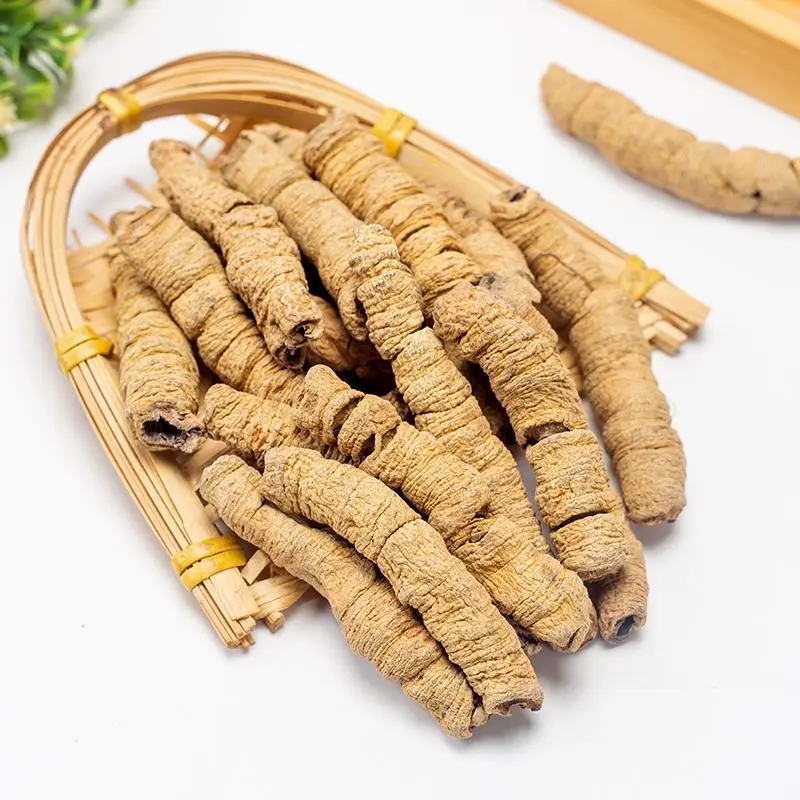
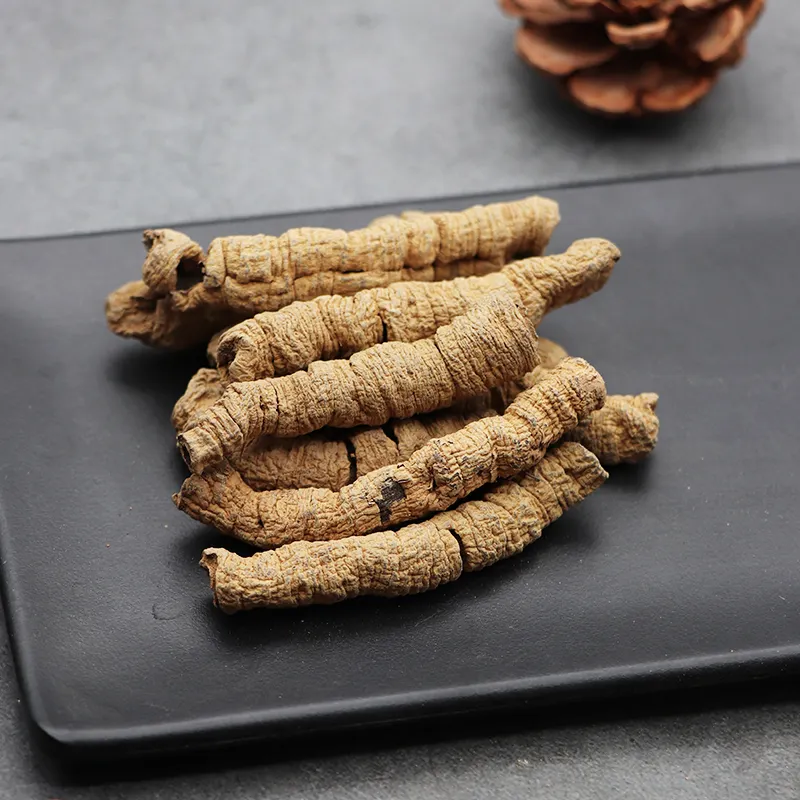
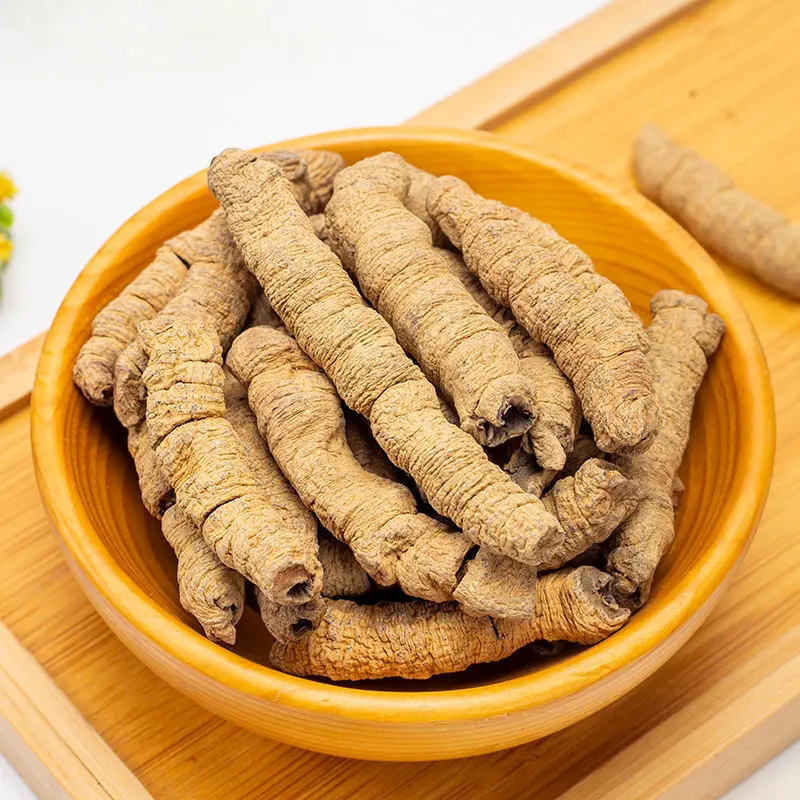


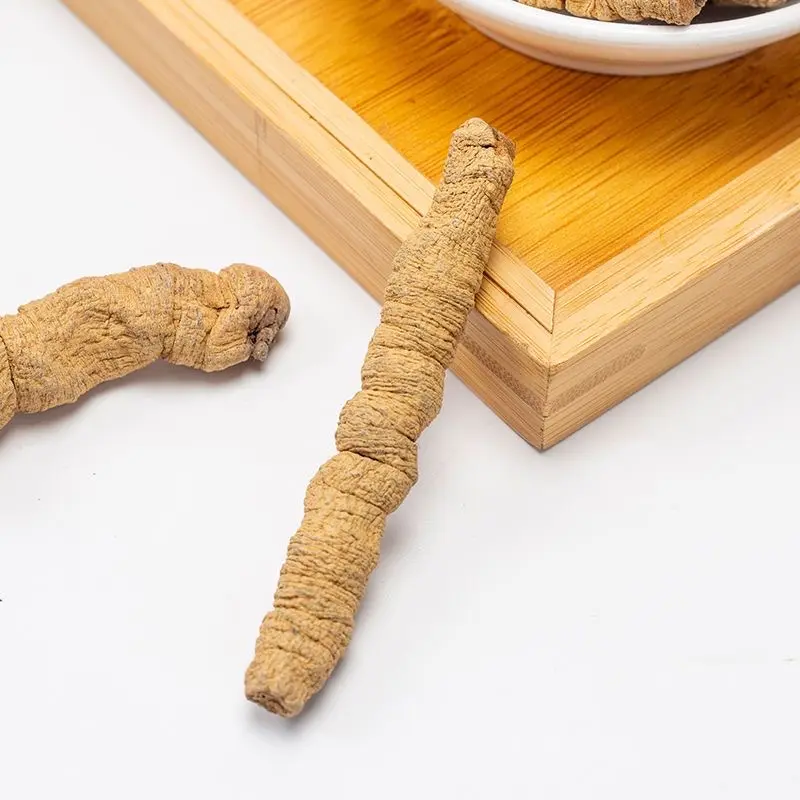

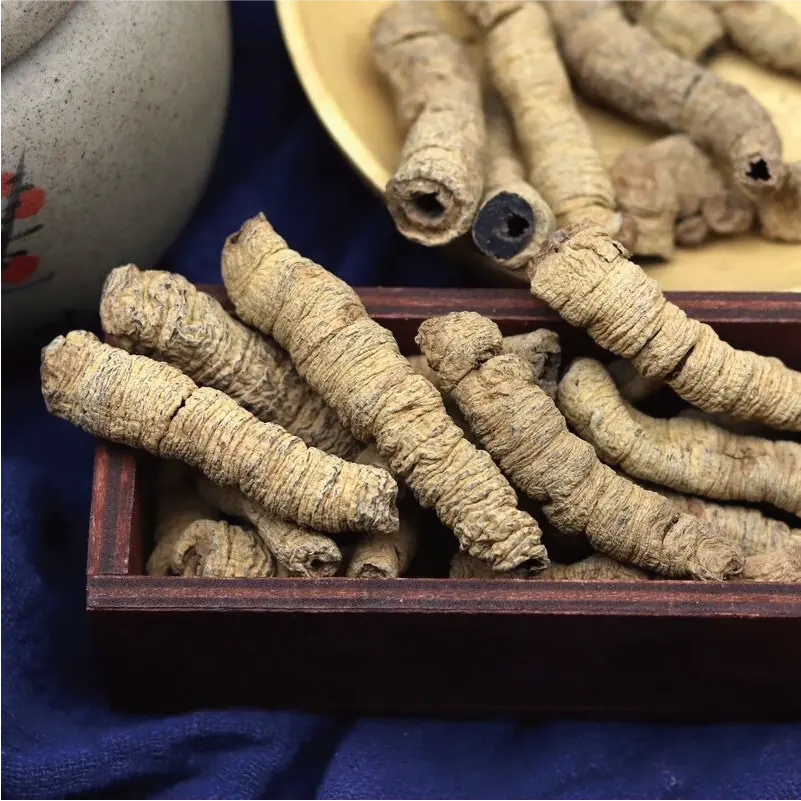

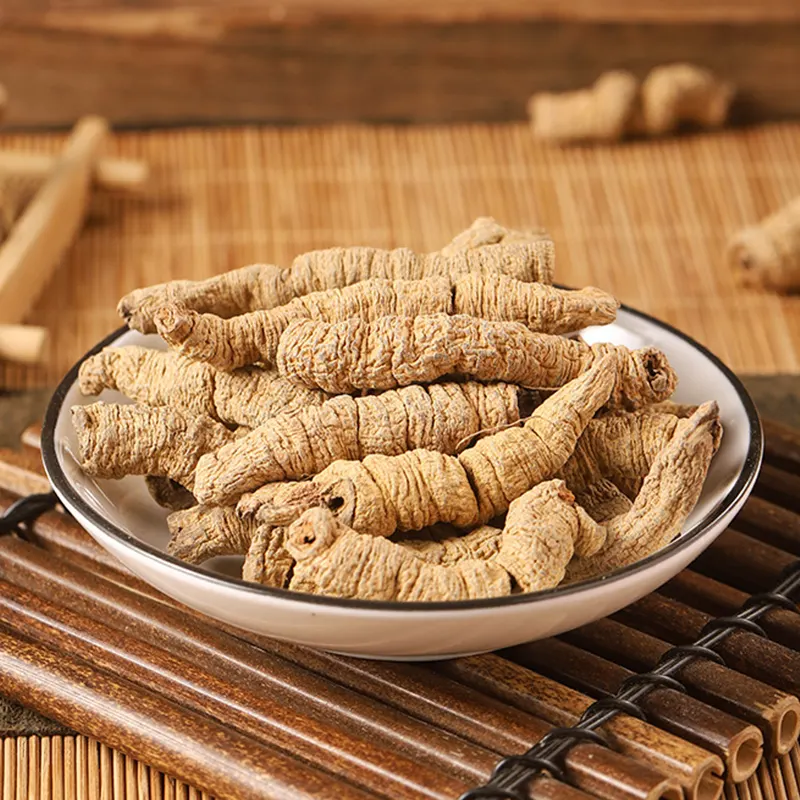
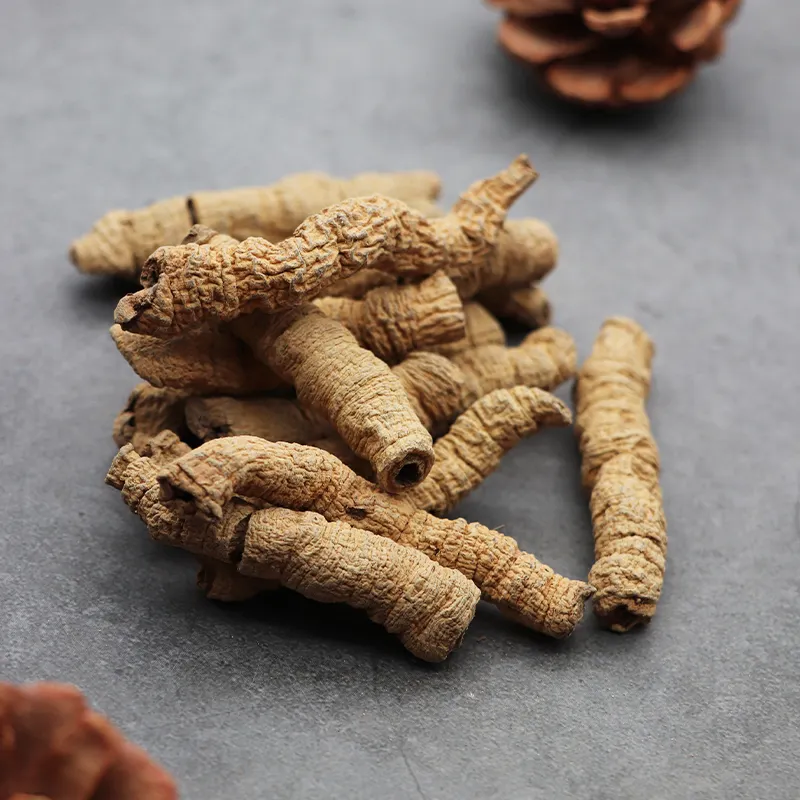
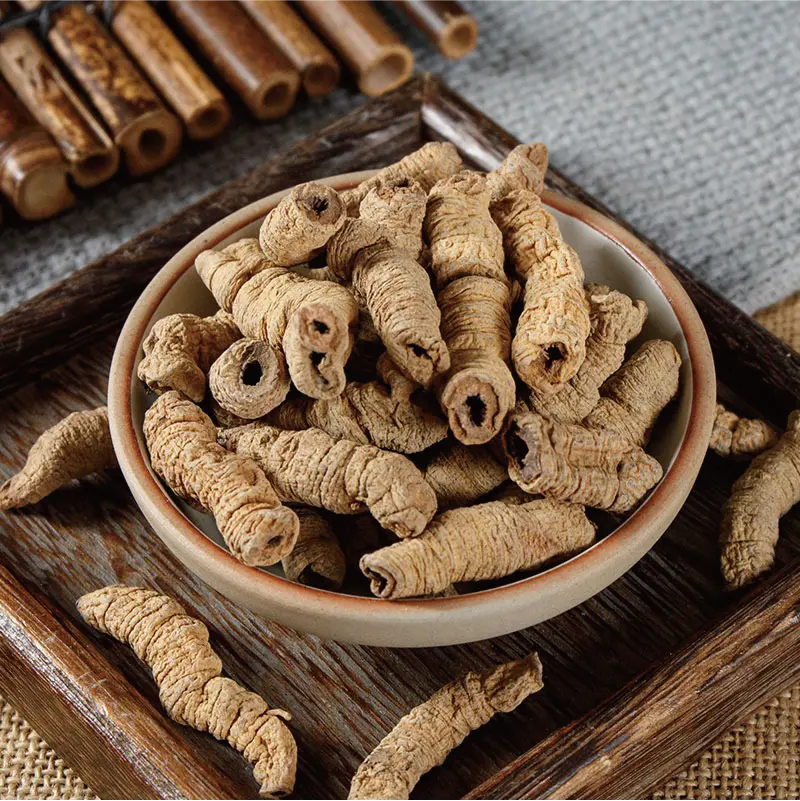


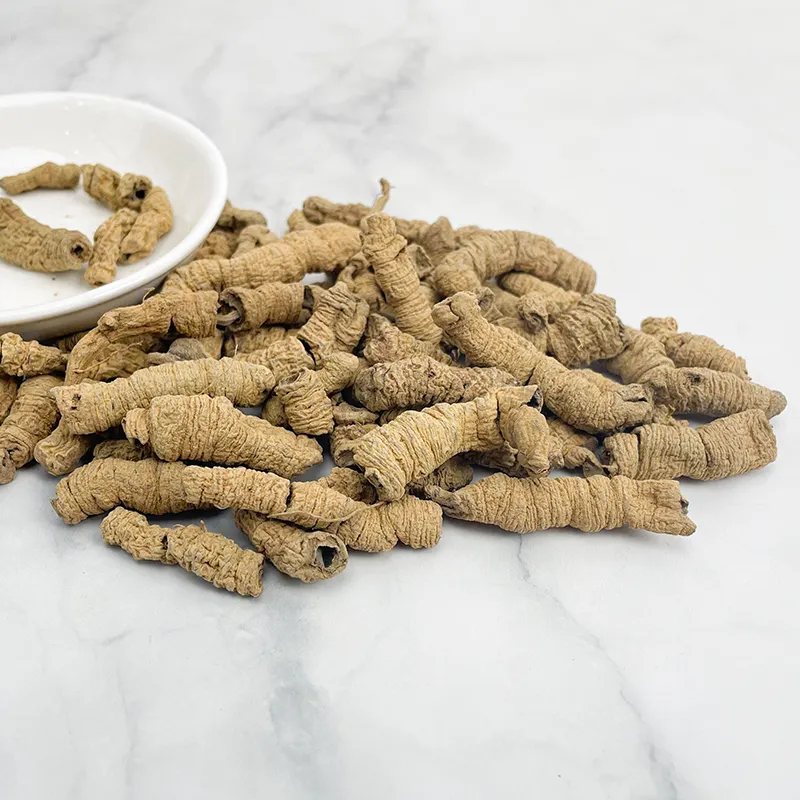
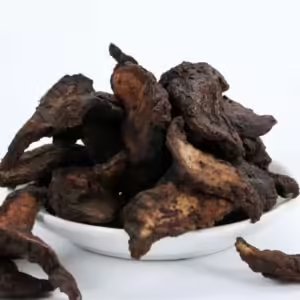
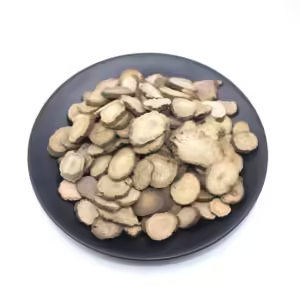
রিভিউ
কোন রিভিউ এখনো আছে।